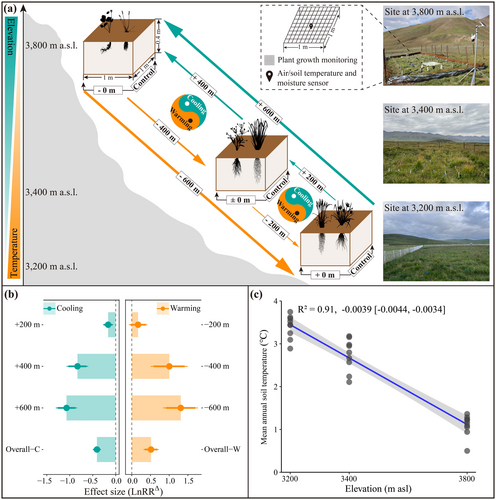Little is currently known about how long-term climate changes modulate the relationship between soil organic carbon (SOC) molecular composition, microbial community and SOC storage and the mechanisms involved. Here, we show substantial changes in subsoil SOC in the Qinghai-Tibetan alpine grasslands over 16 years of soil warming and cooling. Warming reduced SOC content by 8.5%, whereas cooling increased it by 7.0%. Neither warming nor cooling affected plant- and microbial-derived molecular components. However, warming elevated the fungal-to-bacterial biomass ratio (F/B) and the gram-positive to gram-negative bacterial biomass ratio (G+/G-) by 15.0% and 8.6%, respectively, whereas cooling reduced them by 4.5% and 9.6%. Warming reduced SOC storage by directly increasing F/B and G+/G- and indirectly decreasing the soil carbon-to-nitrogen ratio, whereas cooling enhanced SOC storage primarily by decreasing F/B. Conventional warming experiments, which consider only climate warming and neglect cooling, may underestimate the negative impacts of warming on subsoil SOC pools in alpine grasslands.

FIGURE 1
Reciprocal experimental design. (a) Experimental design and photographs of each elevation sample site of the experimental platform. Silhouettes were adapted from PhyloPic under Creative Commons licences via CC BY 4.0. (b) Effects of warming and cooling on mean annual soil temperature (ST). Circles and bars represent the mean values with 90% (thick line) and 95% (thin line) credible intervals (CIs) of the posterior distributions derived from a Bayesian model. Overall-W, the overall mean effect sizes for warming; Overall-C, the overall mean effect sizes for cooling. (c) Relationship between elevation and ST on the basis of the Bayesian regression. The fitted line and shading denote mean model predictions ±95% CIs. Text displays R2, estimated slope, and its 95% CIs.
The link below will guide you to the reading:
https://onlinelibrary.wiley.com/doi/10.1111/ele.70162
